CHEMICAL IDENTIFICATION
-
RTECS NUMBER :
-
IP8750000
-
CHEMICAL NAME :
-
Dimethylamine
-
CAS REGISTRY NUMBER :
-
124-40-3
-
LAST UPDATED :
-
199712
-
DATA ITEMS CITED :
-
56
-
MOLECULAR FORMULA :
-
C2-H7-N
-
MOLECULAR WEIGHT :
-
45.10
-
WISWESSER LINE NOTATION :
-
1M1
HEALTH HAZARD DATA
ACUTE TOXICITY DATA
-
TYPE OF TEST :
-
Standard Draize test
-
ROUTE OF EXPOSURE :
-
Administration into the eye
-
SPECIES OBSERVED :
-
Rodent - rabbit
-
TYPE OF TEST :
-
LD50 - Lethal dose, 50 percent kill
-
ROUTE OF EXPOSURE :
-
Oral
-
SPECIES OBSERVED :
-
Rodent - rat
-
DOSE/DURATION :
-
698 mg/kg
-
TOXIC EFFECTS :
-
Behavioral - excitement Behavioral - muscle weakness Gastrointestinal - ulceration or bleeding from stomach
-
TYPE OF TEST :
-
LC50 - Lethal concentration, 50 percent kill
-
ROUTE OF EXPOSURE :
-
Inhalation
-
SPECIES OBSERVED :
-
Rodent - rat
-
DOSE/DURATION :
-
4540 ppm/6H
-
TOXIC EFFECTS :
-
Sense Organs and Special Senses (Olfaction) - effect, not otherwise specified Sense Organs and Special Senses (Eye) - effect, not otherwise specified Lungs, Thorax, or Respiration - dyspnea
-
TYPE OF TEST :
-
LD50 - Lethal dose, 50 percent kill
-
ROUTE OF EXPOSURE :
-
Oral
-
SPECIES OBSERVED :
-
Rodent - mouse
-
DOSE/DURATION :
-
316 mg/kg
-
TOXIC EFFECTS :
-
Behavioral - excitement Behavioral - muscle weakness Gastrointestinal - ulceration or bleeding from stomach
-
TYPE OF TEST :
-
LC50 - Lethal concentration, 50 percent kill
-
ROUTE OF EXPOSURE :
-
Inhalation
-
SPECIES OBSERVED :
-
Rodent - mouse
-
DOSE/DURATION :
-
4725 ppm/2H
-
TOXIC EFFECTS :
-
Details of toxic effects not reported other than lethal dose value
-
TYPE OF TEST :
-
LD50 - Lethal dose, 50 percent kill
-
ROUTE OF EXPOSURE :
-
Intraperitoneal
-
SPECIES OBSERVED :
-
Rodent - mouse
-
DOSE/DURATION :
-
736 mg/kg
-
TOXIC EFFECTS :
-
Details of toxic effects not reported other than lethal dose value
-
TYPE OF TEST :
-
LD50 - Lethal dose, 50 percent kill
-
ROUTE OF EXPOSURE :
-
Oral
-
SPECIES OBSERVED :
-
Rodent - rabbit
-
DOSE/DURATION :
-
240 mg/kg
-
TOXIC EFFECTS :
-
Behavioral - excitement Behavioral - muscle weakness Gastrointestinal - ulceration or bleeding from stomach
-
TYPE OF TEST :
-
LDLo - Lowest published lethal dose
-
ROUTE OF EXPOSURE :
-
Intravenous
-
SPECIES OBSERVED :
-
Rodent - rabbit
-
DOSE/DURATION :
-
4 gm/kg
-
TOXIC EFFECTS :
-
Details of toxic effects not reported other than lethal dose value
-
TYPE OF TEST :
-
LD50 - Lethal dose, 50 percent kill
-
ROUTE OF EXPOSURE :
-
Oral
-
SPECIES OBSERVED :
-
Rodent - guinea pig
-
DOSE/DURATION :
-
240 mg/kg
-
TOXIC EFFECTS :
-
Behavioral - excitement Behavioral - muscle weakness Gastrointestinal - ulceration or bleeding from stomach
-
TYPE OF TEST :
-
LC50 - Lethal concentration, 50 percent kill
-
ROUTE OF EXPOSURE :
-
Inhalation
-
SPECIES OBSERVED :
-
Mammal - species unspecified
-
DOSE/DURATION :
-
3700 mg/m3
-
TOXIC EFFECTS :
-
Details of toxic effects not reported other than lethal dose value
-
TYPE OF TEST :
-
TDLo - Lowest published toxic dose
-
ROUTE OF EXPOSURE :
-
Oral
-
SPECIES OBSERVED :
-
Rodent - rat
-
DOSE/DURATION :
-
85 mg/kg/35W-I
-
TOXIC EFFECTS :
-
Behavioral - alteration of classical conditioning Liver - changes in liver weight Immunological Including Allergic - decrease in cellular immune response
-
TYPE OF TEST :
-
TDLo - Lowest published toxic dose
-
ROUTE OF EXPOSURE :
-
Oral
-
SPECIES OBSERVED :
-
Rodent - rat
-
DOSE/DURATION :
-
37128 gm/kg/39W-C
-
TOXIC EFFECTS :
-
Liver - changes in liver weight Biochemical - Enzyme inhibition, induction, or change in blood or tissue levels - phosphatases Biochemical - Enzyme inhibition, induction, or change in blood or tissue levels - hepatic microsomal mixed oxidase (dealkylation, hydroxylation, etc.)
-
TYPE OF TEST :
-
TCLo - Lowest published toxic concentration
-
ROUTE OF EXPOSURE :
-
Inhalation
-
SPECIES OBSERVED :
-
Rodent - rat
-
DOSE/DURATION :
-
175 ppm/6H/1Y-I
-
TOXIC EFFECTS :
-
Blood - changes in serum composition (e.g. TP, bilirubin, cholesterol) Nutritional and Gross Metabolic - weight loss or decreased weight gain Biochemical - Enzyme inhibition, induction, or change in blood or tissue levels - phosphatases
-
TYPE OF TEST :
-
TCLo - Lowest published toxic concentration
-
ROUTE OF EXPOSURE :
-
Inhalation
-
SPECIES OBSERVED :
-
Rodent - rat
-
DOSE/DURATION :
-
175 ppm/6H/9D-I
-
TOXIC EFFECTS :
-
Sense Organs and Special Senses (Olfaction) - effect, not otherwise specified
-
TYPE OF TEST :
-
TCLo - Lowest published toxic concentration
-
ROUTE OF EXPOSURE :
-
Inhalation
-
SPECIES OBSERVED :
-
Rodent - rat
-
DOSE/DURATION :
-
175 ppm/6H/2Y-I
-
TOXIC EFFECTS :
-
Sense Organs and Special Senses (Olfaction) - effect, not otherwise specified Nutritional and Gross Metabolic - weight loss or decreased weight gain
-
TYPE OF TEST :
-
TDLo - Lowest published toxic dose
-
ROUTE OF EXPOSURE :
-
Inhalation
-
SPECIES OBSERVED :
-
Rodent - mouse
-
DOSE/DURATION :
-
175 ppm/6H/1Y-I
-
TOXIC EFFECTS :
-
Sense Organs and Special Senses (Olfaction) - effect, not otherwise specified Blood - changes in serum composition (e.g. TP, bilirubin, cholesterol) Nutritional and Gross Metabolic - weight loss or decreased weight gain
-
TYPE OF TEST :
-
TCLo - Lowest published toxic concentration
-
ROUTE OF EXPOSURE :
-
Inhalation
-
SPECIES OBSERVED :
-
Rodent - mouse
-
DOSE/DURATION :
-
175 ppm/6H/2Y-I
-
TOXIC EFFECTS :
-
Sense Organs and Special Senses (Olfaction) - effect, not otherwise specified Nutritional and Gross Metabolic - weight loss or decreased weight gain
-
TYPE OF TEST :
-
TDLo - Lowest published toxic dose
-
ROUTE OF EXPOSURE :
-
Oral
-
SPECIES OBSERVED :
-
Rodent - guinea pig
-
DOSE/DURATION :
-
850 mg/kg/35W-I
-
TOXIC EFFECTS :
-
Liver - changes in liver weight Kidney, Ureter, Bladder - other changes in urine composition Endocrine - other changes
-
TYPE OF TEST :
-
Cytogenetic analysis
MUTATION DATA
-
TYPE OF TEST :
-
Sister chromatid exchange
-
TEST SYSTEM :
-
Rodent - hamster Ovary
-
REFERENCE :
-
MOTOEX Molecular Toxicology. (Taylor & Francis, Inc., 242 Cherry St., Philadelphia, PA USA 19106) V.1- 1987- Volume(issue)/page/year: 1,217,1987 *** REVIEWS *** ACGIH TLV-Not classifiable as a human carcinogen DTLVS* The Threshold Limit Values (TLVs) and Biological Exposure Indices (BEIs) booklet issues by American Conference of Governmental Industrial Hygienists (ACGIH), Cincinnati, OH, 1996 Volume(issue)/page/year: TLV/BEI,1997 ACGIH TLV-STEL 27.6 mg/m3 (15 ppm) DTLVS* The Threshold Limit Values (TLVs) and Biological Exposure Indices (BEIs) booklet issues by American Conference of Governmental Industrial Hygienists (ACGIH), Cincinnati, OH, 1996 Volume(issue)/page/year: TLV/BEI,1997 ACGIH TLV-TWA 9.2 mg/m3 (5 ppm) DTLVS* The Threshold Limit Values (TLVs) and Biological Exposure Indices (BEIs) booklet issues by American Conference of Governmental Industrial Hygienists (ACGIH), Cincinnati, OH, 1996 Volume(issue)/page/year: TLV/BEI,1997 TOXICOLOGY REVIEW CHREAY Chemical Reviews. (American Chemical Soc., Distribution Office Dept. 223, POB 57136, West End Stn., Washington, DC 20037) V.1- 1924- Volume(issue)/page/year: 9,389,1931 *** U.S. STANDARDS AND REGULATIONS *** MSHA STANDARD-air:TWA 10 ppm (18 mg/m3) DTLVS* The Threshold Limit Values (TLVs) and Biological Exposure Indices (BEIs) booklet issues by American Conference of Governmental Industrial Hygienists (ACGIH), Cincinnati, OH, 1996 Volume(issue)/page/year: 3,88,1971 OSHA PEL (Gen Indu):8H TWA 10 ppm (18 mg/m3) CFRGBR Code of Federal Regulations. (U.S. Government Printing Office, Supt. of Documents, Washington, DC 20402) Volume(issue)/page/year: 29,1910.1000,1994 OSHA PEL (Construc):8H TWA 10 ppm (18 mg/m3) CFRGBR Code of Federal Regulations. (U.S. Government Printing Office, Supt. of Documents, Washington, DC 20402) Volume(issue)/page/year: 29,1926.55,1994 OSHA PEL (Shipyard):8H TWA 10 ppm (18 mg/m3) CFRGBR Code of Federal Regulations. (U.S. Government Printing Office, Supt. of Documents, Washington, DC 20402) Volume(issue)/page/year: 29,1915.1000,1993 OSHA PEL (Fed Cont):8H TWA 10 ppm (18 mg/m3) CFRGBR Code of Federal Regulations. (U.S. Government Printing Office, Supt. of Documents, Washington, DC 20402) Volume(issue)/page/year: 41,50-204.50,1994 *** OCCUPATIONAL EXPOSURE LIMITS *** OEL-AUSTRALIA:TWA 10 ppm (18 mg/m3) JAN 1993 OEL-BELGIUM:TWA 10 ppm (18 mg/m3) JAN 1993 OEL-DENMARK:TWA 10 ppm (18 mg/m3) JAN 1993 OEL-FINLAND:STEL 10 ppm (18 mg/m3);Skin JAN 1993 OEL-FRANCE:STEL 10 ppm (18 mg/m3) JAN 1993 OEL-GERMANY:TWA 10 ppm (18 mg/m3) JAN 1993 OEL-HUNGARY:TWA 1 mg/m3;STEL 2 mg/m3;Skin JAN 1993 OEL-JAPAN:TWA 10 ppm (18 mg/m3) JAN 1993 OEL-THE NETHERLANDS:TWA 10 ppm (18 mg/m3) JAN 1993 OEL-THE PHILIPPINES:TWA 10 ppm (18 mg/m3) JAN 1993 OEL-RUSSIA:TWA 10 ppm;STEL 1 mg/m3;Skin JAN 1993 OEL-SWITZERLAND:TWA 10 ppm (18 mg/m3);STEL 20 ppm (36 mg/m3) JAN 1993 OEL-UNITED KINGDOM:TWA 10 ppm (18 mg/m3) JAN 1993 OEL IN BULGARIA, COLOMBIA, JORDAN, KOREA check ACGIH TLV OEL IN NEW ZEALAND, SINGAPORE, VIETNAM check ACGIH TLV *** NIOSH STANDARDS DEVELOPMENT AND SURVEILLANCE DATA *** NIOSH RECOMMENDED EXPOSURE LEVEL (REL) : NIOSH REL TO DIMETHYLAMINE-air:10H TWA 10 ppm REFERENCE : NIOSH* National Institute for Occupational Safety and Health, U.S. Dept. of Health, Education, and Welfare, Reports and Memoranda. Volume(issue)/page/year: DHHS #92-100,1992 NIOSH OCCUPATIONAL EXPOSURE SURVEY DATA : NOHS - National Occupational Hazard Survey (1974) NOHS Hazard Code - 26130 No. of Facilities: 291 (estimated) No. of Industries: 13 No. of Occupations: 16 No. of Employees: 3174 (estimated) NOES - National Occupational Exposure Survey (1983) NOES Hazard Code - X1555 No. of Facilities: 32 (estimated) No. of Industries: 1 No. of Occupations: 1 No. of Employees: 65 (estimated) No. of Female Employees: 65 (estimated) NOES - National Occupational Exposure Survey (1983) NOES Hazard Code - 26130 No. of Facilities: 1406 (estimated) No. of Industries: 22 No. of Occupations: 42 No. of Employees: 28879 (estimated) No. of Female Employees: 2001 (estimated)
|
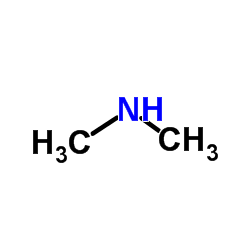








 CAS#:506-59-2
CAS#:506-59-2 CAS#:67-56-1
CAS#:67-56-1 CAS#:34557-54-5
CAS#:34557-54-5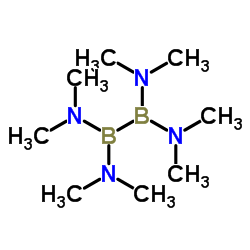 CAS#:1630-79-1
CAS#:1630-79-1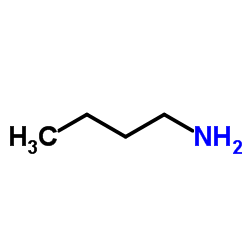 CAS#:109-73-9
CAS#:109-73-9 CAS#:57-13-6
CAS#:57-13-6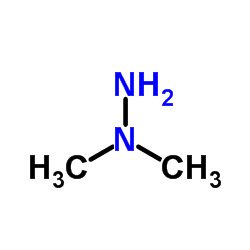 CAS#:57-14-7
CAS#:57-14-7 CAS#:135-19-3
CAS#:135-19-3 CAS#:62-75-9
CAS#:62-75-9 CAS#:78-81-9
CAS#:78-81-9![2-[bis(dimethylamino)boranyl]-2-triethylsilylethenone structure](https://image.chemsrc.com/caspic/212/105551-54-0.png) CAS#:105551-54-0
CAS#:105551-54-0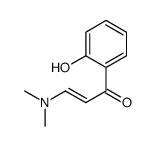 CAS#:106129-86-6
CAS#:106129-86-6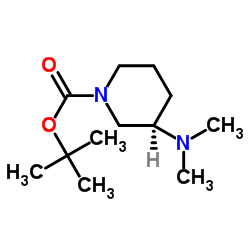 CAS#:1061682-78-7
CAS#:1061682-78-7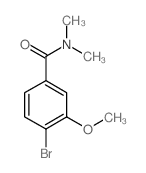 CAS#:1065074-12-5
CAS#:1065074-12-5![9-[(4-methoxyphenyl)methyl]-N,N-dimethylpurin-6-amine structure](https://image.chemsrc.com/caspic/141/112089-06-2.png) CAS#:112089-06-2
CAS#:112089-06-2![Propanedioicacid, 2-butyl-2-[2-(dimethylamino)ethyl]-, 1,3-diethyl ester structure](https://image.chemsrc.com/caspic/258/1112-20-5.png) CAS#:1112-20-5
CAS#:1112-20-5 CAS#:108934-87-8
CAS#:108934-87-8 CAS#:111-53-5
CAS#:111-53-5 CAS#:7223-38-3
CAS#:7223-38-3![3-[(Dimethylamino)methyl]-1H-indole-4-carbonitrile structure](https://image.chemsrc.com/caspic/392/105907-63-9.png) CAS#:105907-63-9
CAS#:105907-63-9
